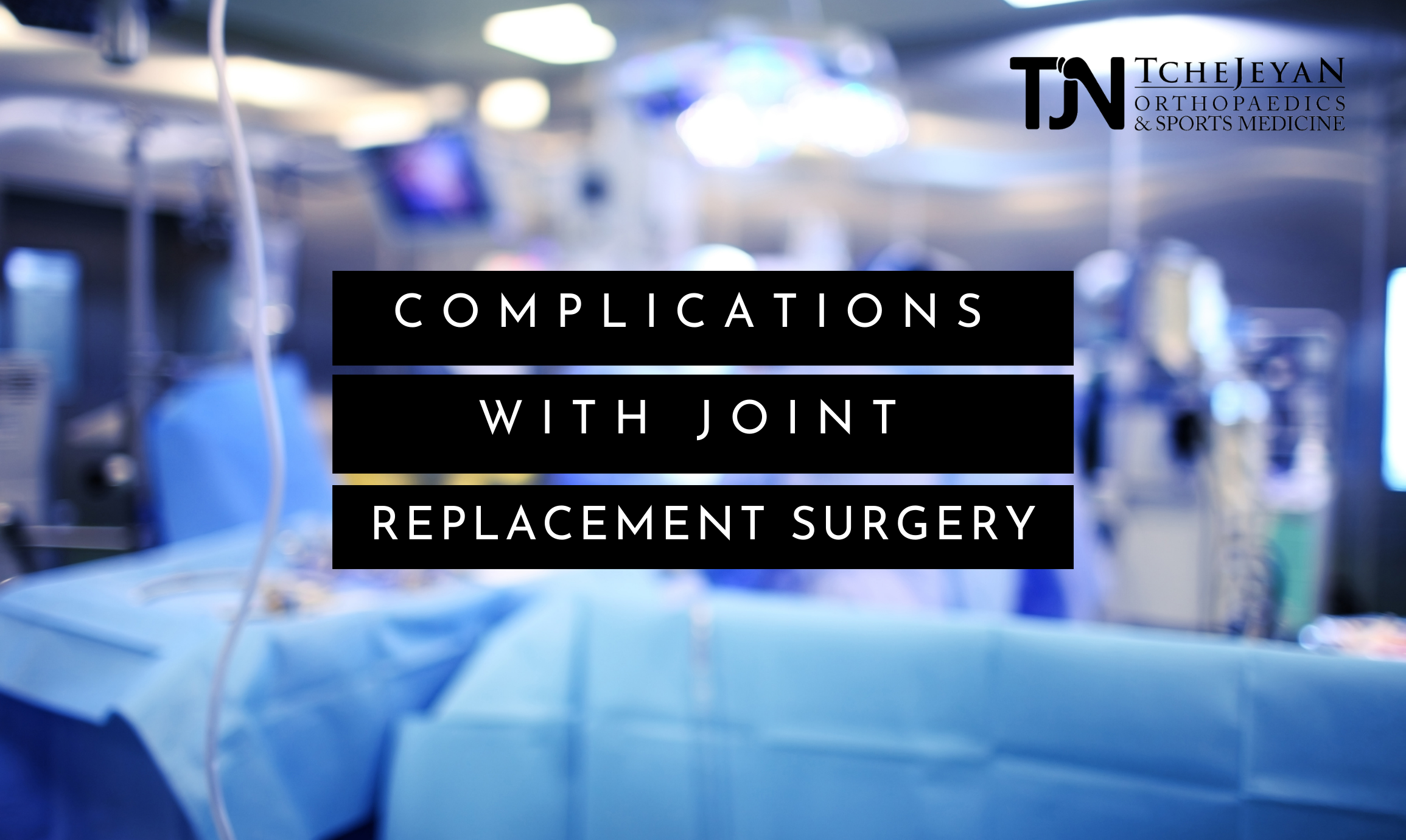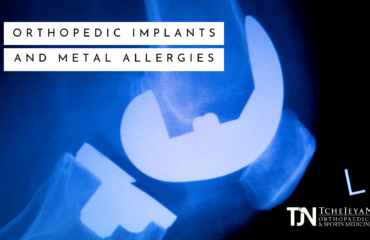Any surgical procedure poses a certain level of risk. When it comes to joint replacement surgery, qualified surgeons take several precautionary measures to avoid potential complications. At TJN Orthopedics, Dr. Gregory H. Tchejeyan boasts some of the nation’s highest accuracy rates and lowest readmission rates. This is largely due to the extra measures he puts in place to prevent complications for his patients.
The four most common complications that Dr. T. works to prevent are: infections, blood clots, failure of device, and dislocation or loosening.
Infections
One of the worst complications a patient can experience post-surgery is an infection. We wrote an entire blog about it here. For this reason, Dr. T. takes a plethora of steps before surgery to prevent the likelihood of such an outcome.
- Chlorhexidine Soap – Dr. T. sends patients home with the antibacterial chlorhexidine soap prior to surgery. The patient must wash their body for 5 days with this soap to lower the bacteria count on the skin’s surface, BEFORE the surgery, thereby reducing the chances of potential infection
- Betadine or Chlorhexidine Prep – Prior to surgery in the operative room, the doctor preps the patient’s leg from top to bottom, with antibacterial soap to minimize postoperative infections.
- Nasal Swabs – No, it’s not the Covid test! Actually, taking a nasal swab prior to surgery helps to identify which particular bacteria the patient carries. Everyone carries bacteria, but this tells the doctor which one the patient’s body colonizes. That way, the doctor knows and can use an antibiotic that would be most successful against it.
- IV Antibiotics – IV antibiotics are given to each patient 1 hour before surgery, then again after surgery in 2 doses, 8 hours apart. This helps fight infections before they start!
- Surgical Hospitals – Outpatient surgical centers are generally cleaner environments than, say, a general hospital because they primarily see healthy people, minimizing the germs in the facility. This sterile environment reduces chances for infection as well.
- Specialized Room – In a surgical center, specialized operating rooms have systems that push air in the opposite direction of the surgery, called laminar flow, keeping extra bacteria away from the surgical site.
These steps are definitely surgeon-specific and are not universally practiced. It’s best to choose your surgeon wisely to ensure they make patient care a top priority.
Blood Clots
Anytime a patient undergoes surgery, being in one position for a prolonged period of time puts a patient at risk for a blood clot. For this reason, Dr. Tchejyan routinely puts patients on prophylactic (preventative) anticoagulation medicine in order to avoid a potential concern. There are two approaches to anticoagulation:
- Chemical Anticoagulation – There are several oral options for this. Some patients with preexisting conditions or who are on blood thinners may not need it, but others may take common anticoagulation drugs like Coumadin or Lovenox.
- Mechanical Anticoagulation – Dr. T. employs the use of a Sequential Compression Device after knee replacements. This machine gently squeezes the leg from the ankle to the knee in order to circulate blood through the calf, which is the most likely location for a blood clot post knee surgery. He also uses T.E.D. (Thrombo-Embolus Deterrent) Stockings, or compression socks, that go up to the thigh to reduce the clot risk.
Some patients who carry protein C are prone to blood clots, so TJN Orthopedics takes necessary precautions with this advanced knowledge. Post-surgery, swelling in the leg or immediate pain may indicate a clot, at which point the surgeon would be prompted to do an ultrasound and learn more.
Device Failure
Rarely, device failure can happen a few years after surgery. Since orthopedic devices should survive for decades, it is considered a “failure” if the device doesn’t last for its full term. This could be due to an infection that causes aseptic loosening. It could also be the result of the bone failing to integrate with a press-fit device. Similarly, there are unique cases in which the cemented implant fails to bond to the skeleton.
Periprosthetic fractures can also take place during surgery, though highly unlikely, and are likely due to poor bone quality. It’s something that can either be fixed on the spot, or it may require non-operative treatment, at which point the patient would be responsible for a non-weight bearing recovery plan.
Dislocation (Hip) And Loosening (Knee)
Most common in hip surgeries, dislocation can often be attributed to either an early-identified technical issue that will require revision or a patient compliance issue. The patient is responsible for keeping their hip in the proper and safe position during recovery. Dislocation is directly related to implantation. The accuracy of device implantation is greatly improved with today’s robotic methods, for which Dr. T. has become well known in the area.
Robotic surgery decreases the chances for loosening, but the quality of the bone makes a difference too. For instance, a tightly fitted knee replacement can put pressure on the joint and cause a loosening. Likewise, loosening can also occur if the plastic pieces begin to wear out. For this reason, Dr. T. takes frequent x-rays (every 3 years) on his surgical patients to keep up on their alignment and preserve the longevity of the device.
Surgical Technique is likely the most specific factor when considering the risk for potential complications with any joint replacement operation. Be sure to choose a fellowship-trained orthopedic surgeon and lessen the risk of post-surgical complications. Contact TJN Orthopedics today to schedule your orthopedic consultation.





[…] your body and repair joint damage, many people are hesitant because they are worried about the long-term consequences. Today, we’ll discuss some common misconceptions and have a closer look at knee anatomy and […]